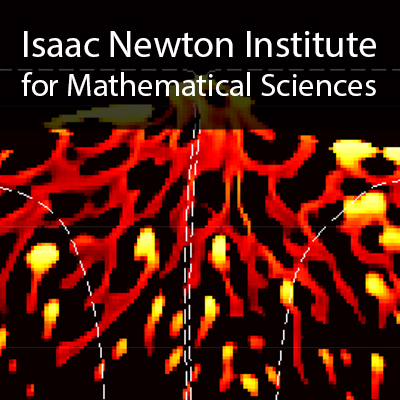Magma generation and extraction beneath mid-ocean ridges and oceanic hotspots
Duration: 51 mins 15 secs
Share this media item:
Embed this media item:
Embed this media item:
About this item

| Description: |
Ito, G (University of Hawaii)
Monday 6th June 2016 - 14:00 to 14:45 |
|---|
| Created: | 2016-06-14 10:34 |
|---|---|
| Collection: | Melt in the Mantle |
| Publisher: | Isaac Newton Institute |
| Copyright: | Ito, G |
| Language: | eng (English) |
| Distribution: |
World
|
| Explicit content: | No |
| Aspect Ratio: | 16:9 |
| Screencast: | No |
| Bumper: | UCS Default |
| Trailer: | UCS Default |
| Abstract: | Much knowledge about the physics of melt generation and migration in the mantle has come from seismic imaging and geodynamic modelling studies of mid-ocean ridges (MORs) and oceanic hotspots. Global-scale seismic studies show evidence for incipient, perhaps volatile rich, melting starting at depths of ~150 km beneath MORs. Variations in the width of the seismically-imaged melting zone as well as asymmetries in this zone across MORs reveal important influences of mantle flow on melt generation. Enhanced temperatures and mantle upwelling rates associated with mantle plumes are especially important in giving rise to local peaks in melt generation at hotspots. The upper-mantle seismic structure of plumes can in some cases (Iceland) be explained by relatively simple models of thermal plume-lithosphere interaction, in other cases suggests more complex thermochemical convection (Hawaii), and in other cases (Galapagos) requires large variations in solid volatile content, temperature, and/or melt content not explained by current models. The thermo-mechanical process by which melt is extract out of the asthenosphere and enters the lithosphere is poorly understood, but the process can evidently alter the isotropic as well as anisotropic seismic wave speeds over substantial volumes of this boundary beneath MORs and hotspots. Other seismic studies show evidence that the amount of melt that is retained in the mantle increases as spreading rate decreases at slow spreading rates, thus explaining global trends of crustal thickness at MORs. Studies also show that more melt is retained in the shallow-most mantle near offsets in ridge segments than near centers of ridge segments. Together, these findings suggest that the ability of melt to penetrate the asthenosphere-lithosphere boundary is impeded by decreases in melt flux, strain rate, gradients in mantle temperature or a combination of the three.
Related Links http://www.soest.hawaii.edu/GG/FACULTY/ITO - Garrett's website |
|---|---|
Available Formats
| Format | Quality | Bitrate | Size | |||
|---|---|---|---|---|---|---|
| MPEG-4 Video | 640x360 | 1.93 Mbits/sec | 745.07 MB | View | Download | |
| WebM | 640x360 | 1.16 Mbits/sec | 446.42 MB | View | Download | |
| iPod Video | 480x270 | 522.14 kbits/sec | 195.99 MB | View | Download | |
| MP3 | 44100 Hz | 249.74 kbits/sec | 93.84 MB | Listen | Download | |
| Auto * | (Allows browser to choose a format it supports) | |||||

